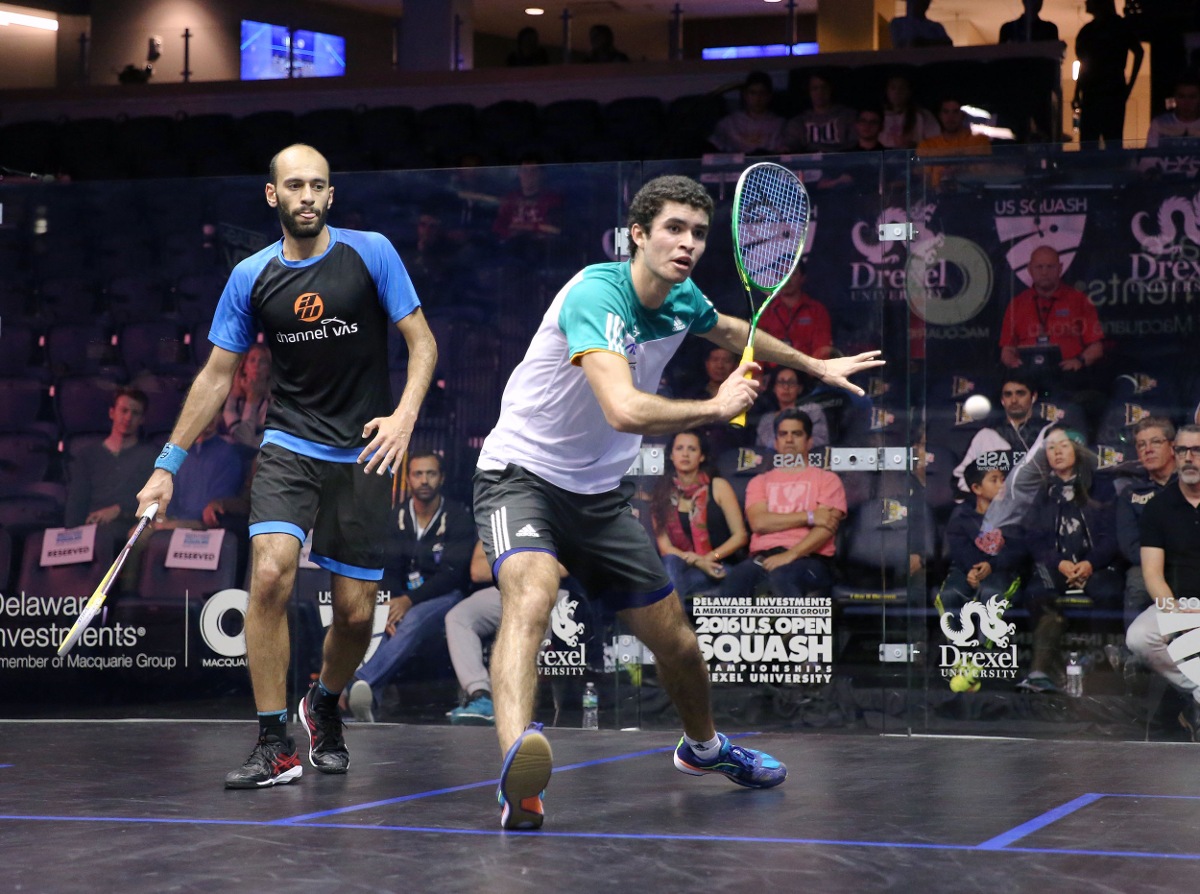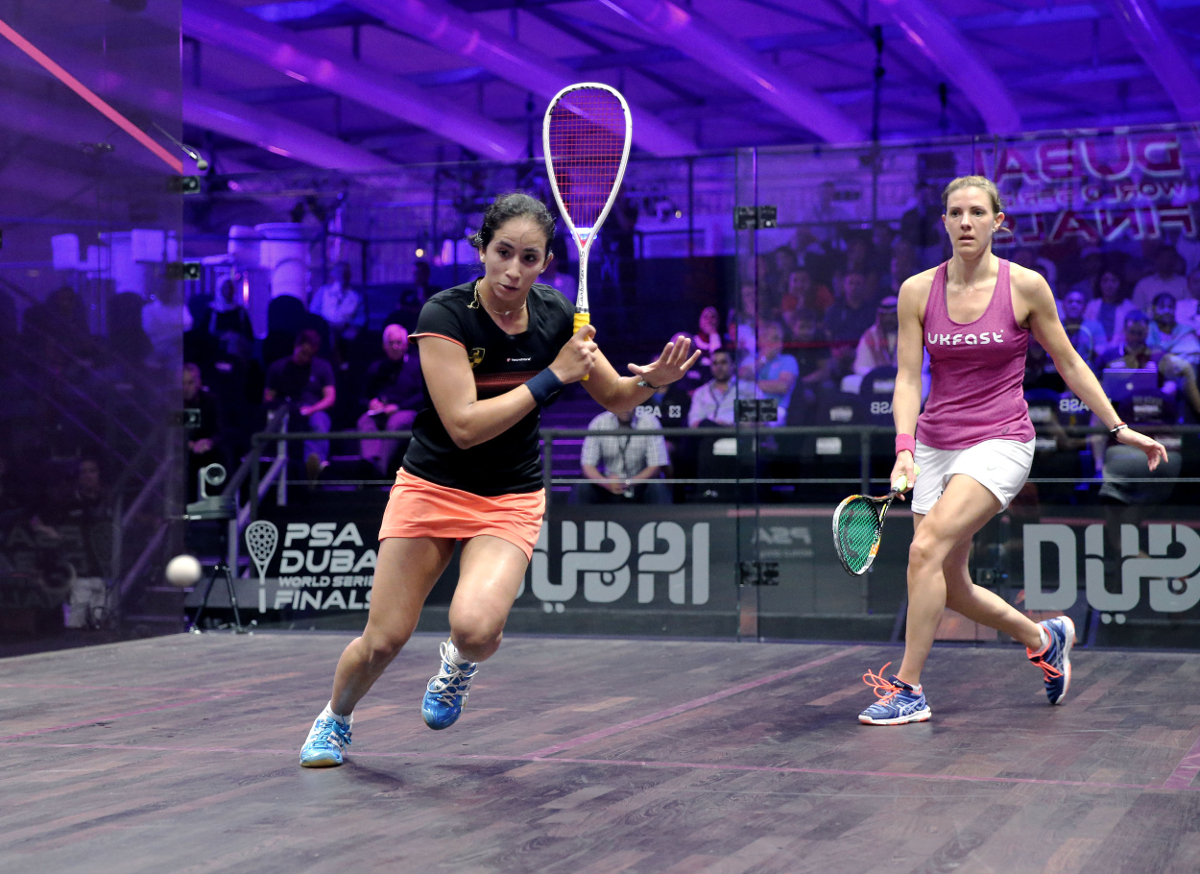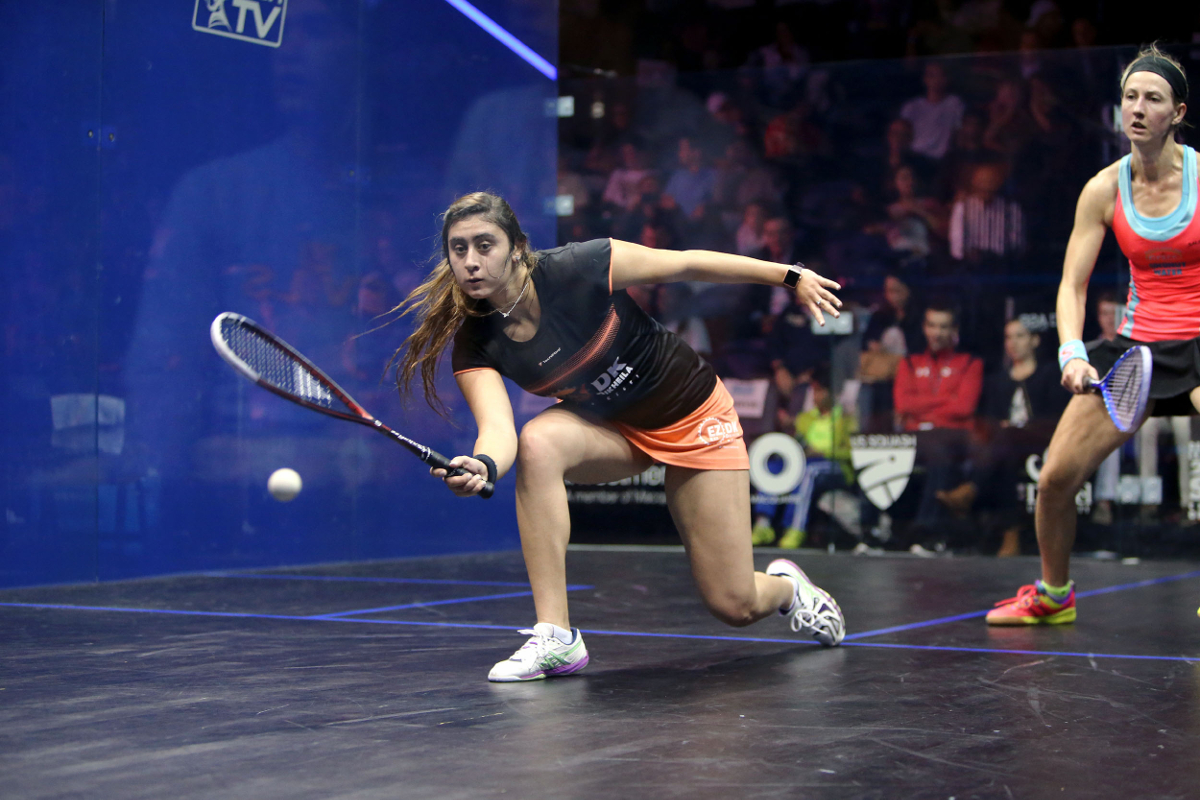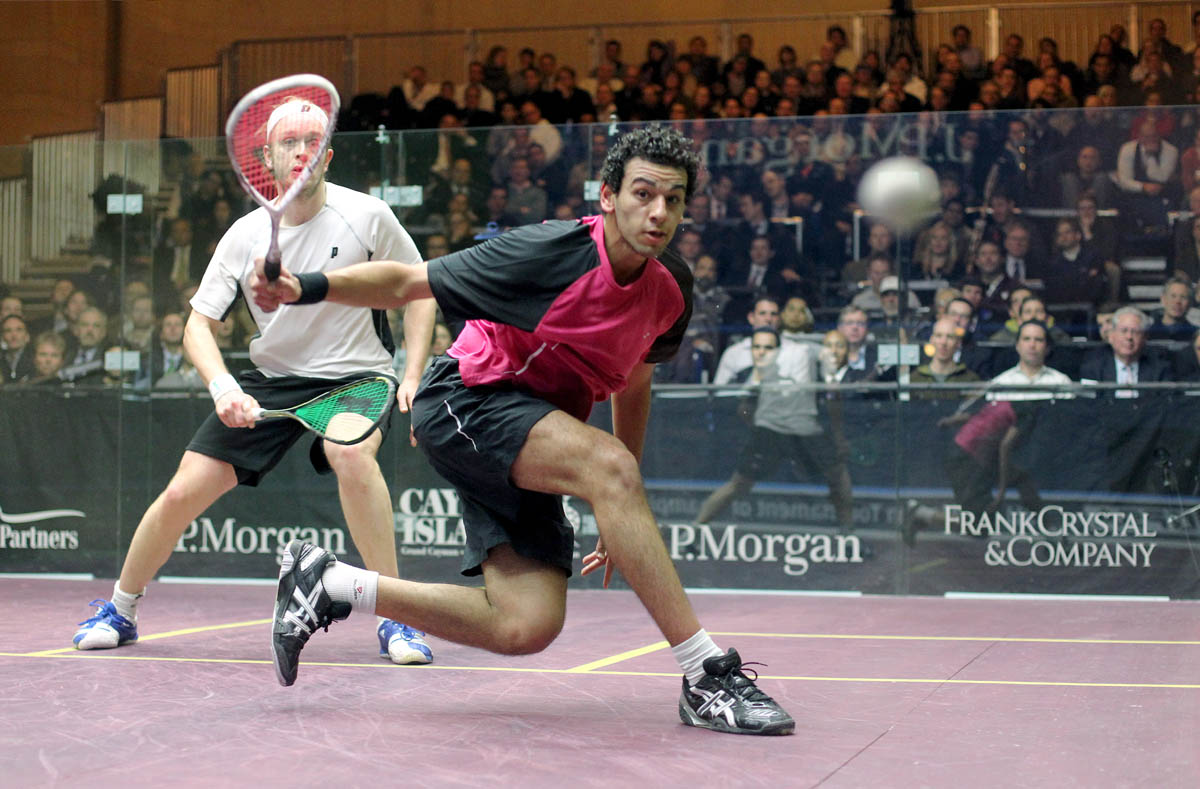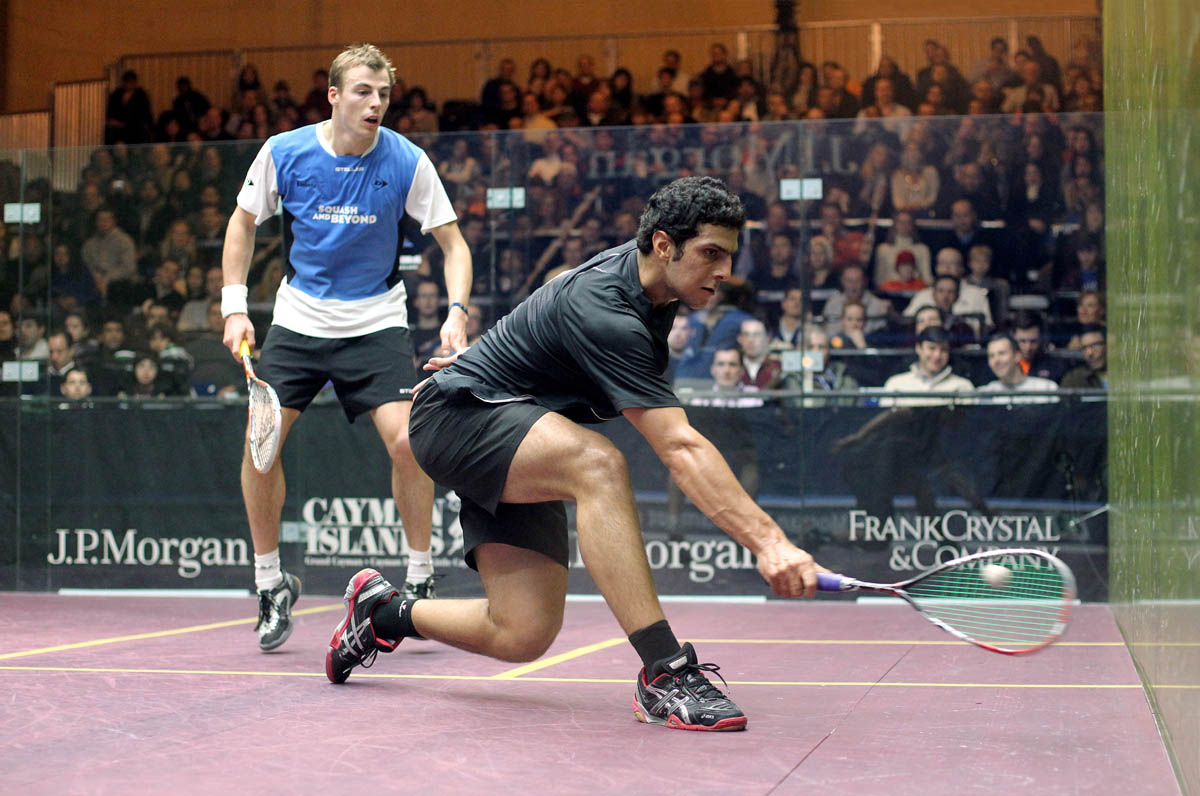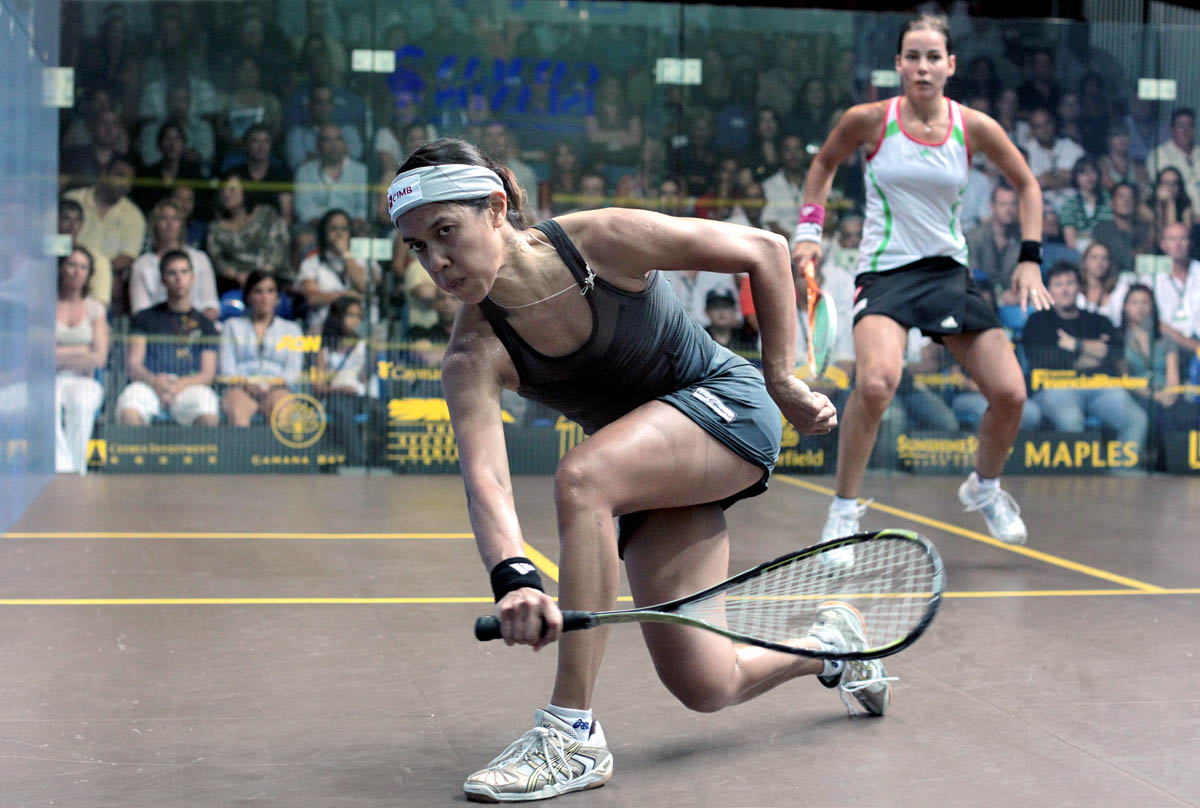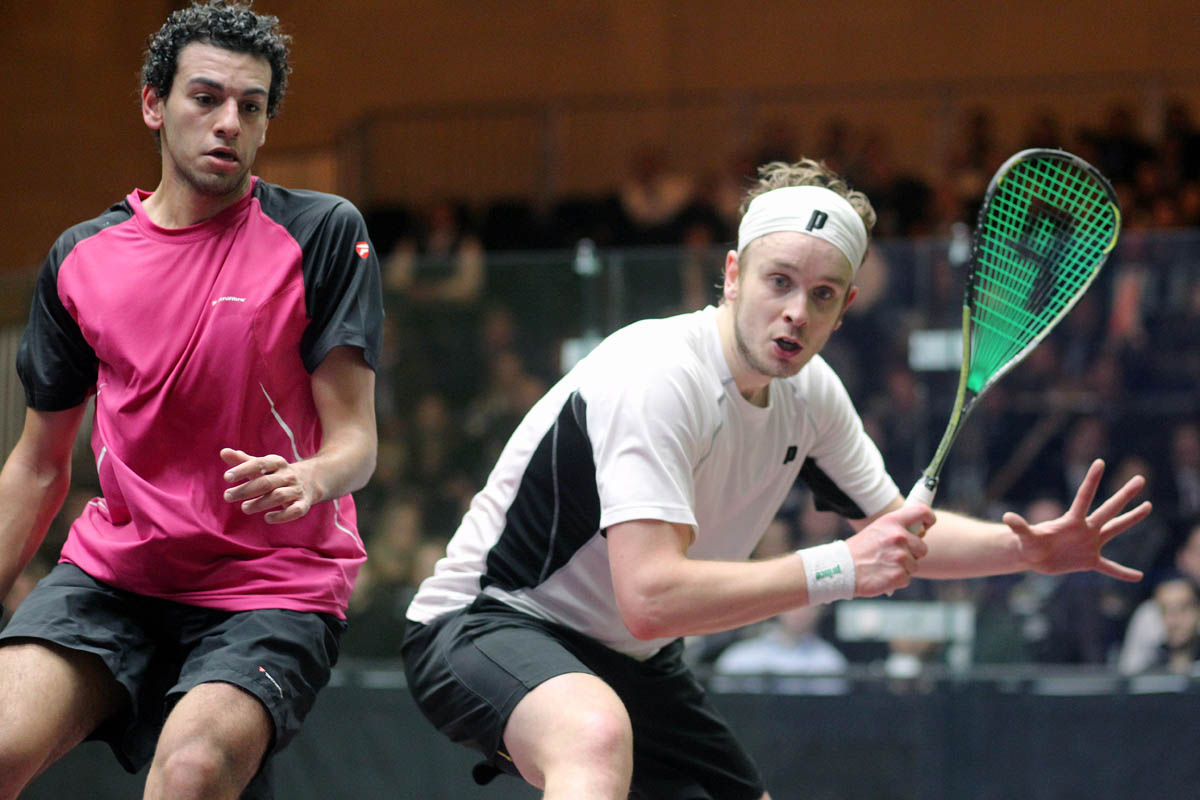Glossary of Terms
"A" Game
When the player hits the ball with more than reasonable quality.
Ambidexterity
When the payer uses both hands. Imagine rarely having to use your backhand
Anticipating
When the player moves in the direction of the ball before the opponent hits the ball.
When the player does not move early but mentally covers the possibility of the shot occurring.
"B" Game
When the player hits the ball with less than reasonable quality.
Back Door
Entry and exit door for players situated in the back wall.
Back Door player exit
When a player straight drives from the D1 Zone and D2 Zone clearing the hitting area with the left and right foot, respectively, encourages the player to return to the T via the back door.
Back Swing
The Back Swing is defined as movement of the racquet head in a backward direction before moving forward.
Balanced
When the player is in position to hit ball.
Ball Hitting Area
The area where the player makes contact or can make contact with the ball.
Basic Swing
A swing which is basic to the player. That is, not an improvised swing.
Body Position
The Classical Side on Position: occurs when the upper body is side on to the direction the ball is travelling when making contact.
Peripheral Vision: The player’s ability to be able to see his opponent whilst in the process of hitting the ball.
The Front Foot: The foot that presents closer to the front wall. For example, when the player hits a forehand the front foot is the left foot.
The Back Foot: The foot that presents closer to the back wall. For example, when the player hits a forehand the back foot is the right foot.
Clock
The Clock: A diagrammatical perspective that the player uses to assist when identifying the Natural Hitting Areas.
This perspective encompasses the ball’s approximate time position (circumference) which is the direction of the Step Hit the player has to take and also the player’s radius distance (the hand of the clock) of the Step Hit which is needed to contact the ball.
The Clock Direction: A diagrammatical perspective that the player uses to assist when identifying the direction required to move to a General Hitting Zone.
Cocked Wrist
Cocked Wrist - Mid Range
The player flexes and extends the hand to find the mid range position before abducting the hand to cock the wrist.
Cross Bat
The player his across the line of flight.
Extended Cocked Wrist
The player's hand whilst in a mid range position adducts to an extended cocked wrist.
Conscious Squash
When a player is either learning or implementing My Strategy,
Creating Time
When the player either defends or attacks to create time to attain the T.
Elite Strategy
The strategy that a registered PSA player uses.
Flying the elbow
When the player on the forehand closes the racquet face, the player flies the elbow.
Forward Swing
The Forward Swing is defined as a movement of the racquet head in a forward direction after moving backward.
Ghosting
When player mimics a technique or a movement pattern without the ball.
Gooseneck
The player flexes the hand into a gooseneck.
Grip
The Neutral Grip: The player should hold the racquet as if shaking hands. The forefinger knuckle should be higher on the grip than the thumb knuckle so that it forms a V and the base of which is in line with the left edge of the handle and the frame of the racquet. The small finger will leave a gap of approximately half an inch from the base of the handle. The neutral grip will initially feel weak and uncomfortable. The racquet face will present in a neutral position whether the wrist is cocked or not cocked. The player should only see the frame of the racquet head. This grip will assist in maintaining a cocked wrist. The same grip is used for the backhand.
The Natural Grip: Although not recommended, this grip feels strong, secure and comfortable. Forehand knuckle is generally flush with thumb knuckle. Whether the wrist is cocked or not, the racquet face will present closed on the forehand and open on the backhand.
The Open Racquet Face Grip: Open the racquet face by rotating the handle in the fingers. The V will have moved anti clockwise. This normally occurs when trying to hit the ball straight when the player is positioned too far behind which normally would require the player to boast. This example applies when the player hits the ball before the back wall.
The Shortened Grip: Shorten the grip by moving hand up towards neck of racquet. This normally occurs when the player is restricted when hitting the ball off the back wall.
The Open Racquet Face Shortened Grip: The same as above but the player hits the ball off back wall and not only opens the face but also shortens the grip to assist in clearing the back wall.
The Closed Racquet Face Grip: Close the face by rotating the handle in the fingers. The V will have moved clockwise. It is possible to close the racquet face when volleying extremely close to the body. This is highly unusual and generally not recommended. This allows the player to volley straight instead of reflexing cross-court. Normally only done on forehand.
The Handle Thickness: The thickness of the actual handle of the racquet can have a bearing on the grip. If the player has a small hand then it is important not to have a handle that is too thick, otherwise, the neutral grip will feel too weak, which encourages the player to use the Natural Grip.
Holistic Swing
The Holistic Swing: is defined as a complete swing with no pauses throughout.
Ideal Low Height
The height which encourages the player to hit through the line of flight.
Ideal High Height
The height which encourages the player to hit through the line of flight.
Ideal Waist Height
The height which encourages the player to hit across the line of flight.
Improvised Swing.
A swing which is not basic to the player.
Jump Step
The Jump Step is defined as: When the player does not know the direction of the ball the player just prior to the opponent hitting the ball jumps and then on identifying the direction before landing reacts with a change of direction (if required) of the feet on landing with either foot (subject to the desired direction) pushes off in that direction.
Lateral Jump Step
The Lateral Jump Step is defined as: When the player reacts with a Jump Step in a lateral direction.
Forward Jump Step
The Forward Jump Step is defined as: When the player reacts with a Jump Step in a forward direction.
Backward Jump Step
The Backward Jump Step is defined as: When the player reacts with a Jump Step in a backward direction.
Leading the racquet face
When the player opens the racquet face, the player leads the racquet head.
Length
Refers to the quality of the shot.
Perfect Length
Perfect Length: This occurs when the ball after bouncing does not rebound off the back wall, and ideally hits the back wall nick. This is normally done when attacking with a low hard drive either straight or cross-court. Most coaches and players refer to this as good length.
Good Length
Good Length: This occurs when the ball after bouncing rebounds off the back wall or hits the back wall directly before rebounding. This is normally done when defending with a lob or a high medium paced drive either straight or cross-court. Most coaches and players refer to this as defensive length.
Good Length turning into Perfect Length
Good Length turning into Perfect Length: This occurs when the ball hits the nick after the bounce or directly. This is often occurs when defending with a high soft lob either straight or cross-court.
Line of Flight
The direction the ball is moving either incoming of outgoing.
My Strategy
The strategy that the author teaches.
My Strategy
To adopt My Tactics to achieve the strategic goal: To attain the T by the time the opponent is about to hit the ball.
My Tactics
The process the author adopts to achieve the goal of My Strategy.
Natural Angle
When the player opens (leads) the racquet face somewhere between 30- 45 degrees (natural angle) the opportunity to play a slice drop presents. That is, the natural angle for a drop is between 30-45 degrees.
Natural Hitting Areas
The four natural areas where the player can hit the ball either straight, cross-court, boast side wall or boast back wall.
Natural Tactics
Tactics which result in (naturally) achieving My Strategic gaol.
Neutral
A vertical line (plane).
Non-Basic Swing
A swing which is not basic to the player. That is, an improvised swing.
Non-Basic In - Between Swing
A swing which is not basic to the player but is not an improvised swing.
Off Balanced
When the player is not in position to hit ball.
When the player although in position to hit the ball, the ball is tight to the wall.
Old School
Tactics, Technique, Etc, which are considered outdated. (eg. author's photo).
Open Plane Swing
The Open Plane: Defined in relation to the player opening the racquet face normally by supination on the forehand and pronation on the backhand, respectively.
Open To Closed Plane Swing
The Open To Closed Plane: Defined in relation to the player opening the racquet face normally by supination on the forehand and pronation on the backhand, respectively. Then the player closes the racquet face by pronation on the forehand and supination on the backhand, respectively.
Open To Extended Plane Swing
The Open to Extended Plane Swing: Defined in relation to the player opening the racquet face, past the natural angle, normally by supination on the forehand and pronation on the backhand, respectively.
Open Plane Restricted Swing
The Open Plane Restricted Swing: Defined in relation to the player opening the racquet face normally by supination on the forehand, however, inhibits the swing.
Over Anticipating
When the player moves in the wrong direction before the player hits the ball.
Over anticipating is defined as: When the player does not know and Steps or Jump Steps in the anticipated (wrong) direction of the ball. Also when the player knows and assumes (incorrectly) the direction of the ball with either a Step or Jump Step.
Peripheral Vision
The player’s ability to be able to see his opponent whilst in the process of hitting the ball.
Plane
A plane is a flat, two-dimensional surface.
The videos' graphics and diagrams are two-dimensional. To recognise this fact the author has referred to the swings as Plane Swings. For example, The Open Plane Swing.
Player
Player or opponent: A right-handed or left-handed player who plays squash.
Club player: A player of low to average standard.
High club player: A player of high standard.
Elite player: A player of National and International standard.
Positioning
The radius distance the player presents from the ball and the circumference (clock) positioning of the ball.
Process
The system (process) that the author incorporates for My Strategy.
Pronation
When using the backhand the player closes the racquet face.
Pros and Cons
Pros
Positive aspects.
Cons
Negative aspects.
Quality
Superior quality: The ball is hit with quality that the opponent may not return. That is, the ball is often unplayable. This superior quality is relative to the level or standard of the players. That is, a player of a much higher standard would only need reasonable quality for it to be superior for an opponent of a much lower level.
More than reasonable quality: The ball is hit with quality that the opponent can return but may put pressure back on the player. This reasonable quality is relative to the level or standard of the player. That is, a player of a lower level would need superior quality for it to be reasonable for an opponent of a much higher standard.
Reasonable quality: The ball is hit with quality that the opponent can return but does not normally put pressure back on the player. This reasonable quality is relative to the level or standard of the player. That is, a player of a lower level would need superior quality for it to be reasonable for an opponent of a much higher standard.
Poor quality: The ball is hit with quality that the opponent can return easily and would probably put pressure back on the player. This poor quality is relative to the level or standard of the player. That is, a player of a lower level would need reasonable quality for it to be poor for an opponent of a much higher standard.
Role Playing
A psychological technique which encourages the player to be involved in different role playing scenarios e.g. role reversal.
Role Reversal
A psychological technique which encourages the player to be involved in different role playing scenarios.
Restricted Swing
When a player uses a swing which is inhibited. For example an improvised swing.
Reverse Gooseneck
The player extends the hand into a reverse gooseneck.
Rocking the forearm
When the player on the backhand closes the racquet face, the player rocks the forearm.
Routines
Exercises or drills that a player incorporates into a program.
Solo: Routines where a player trains alone.
One feeder: Routines where a player has another player (feeder) or coach to hit the ball (feed).
Two feeder: Routines where a player has two feeders to hit the ball or balls.
Rotation
Rotation: The term used to cover both Supination and Pronation. Ideally, Rotation occurs when the wrist is cocked but also occurs when the wrist is adducted.
Segmented Swing
The Segmented Swing: is defined as an incomplete swing with pauses throughout.
This is used as a teaching aid when learning technique.
Shadowing
When the player either moves to the same side of court as the opponent or near an opponent.
Shots
The Lob: The player hits the ball high and slow either cross-court or straight.
The Drop: The player hits the ball low and slow either straight or cross-court.
The Slice Drop: The player hits the ball as it is rising at the top of the bounce with slice, which imparts backspin. This in turn assists in taking the pace of the ball. The ball is hit directly to the front wall, running parallel to the sidewall just above the Tin Line, either close to the side wall or hitting the nick on the volley or on the second bounce. The player normally plays this shot when balanced.
The Cross Court Drop: The player hits the ball as it is rising at the top of the bounce with slice, which imparts backspin. This in turn assists in taking the pace of the ball. The ball is hit directly to the front wall, cross-court just above the Tin Line, either hitting the nick on the volley or on the second bounce. The player normally plays this shot when balanced
The Top Spin Drop: The player hits the ball at the top of the bounce when the ball is low as the ball is rising. which imparts top spin. This in turn assists in taking the pace of the ball. The ball is hit directly to the front wall, either straight or cross court just above the Tin Line either close to the side wall or hitting the nick on the volley or on the second bounce. The player normally plays this shot when balanced or even off balance.
The Drive: The player hits the ball with pace directly to the front wall, between the Cut Line and the Tin Line.
The Straight Drive: The player hits the ball with pace directly to the front wall, running parallel to the sidewall between the Cut Line and the Tin Line.
The Cross-Court Drive: The player hits the ball with pace directly to the front wall, from one side of the court to the other between the Cut Line and the Tin Line.
The Boast: The player hits the front wall via one or some of the other walls.
The Running Boast: The player hits the front wall via the side wall. The ball after hitting the front wall bounces and runs into the opposite side wall hoping to find the nick.
The Nick Boast: The player hits the front wall via the side wall. The ball after hitting the front wall reaches the opposite side wall on the volley hoping to find the nick.
The Reverse Boast: The player hits the front wall via the opposite side wall.
The Reverse Running Boast: The player hits the front wall via the opposite sidewall. The ball after hitting the front wall bounces and runs into the other sidewall hoping to find the nick.
The Reverse Nick Boast: The player hits the front wall via the opposite side wall. The ball after hitting the front wall reaches the opposite side wall on the volley hoping to find the nick.
The Back Wall Boast: The player hits the front wall via the back wall. The ball after hitting the front wall bounces running parallel to the side wall, hoping to hug the wall.
Shots - New Terms
The Bob: The player attempts to play a tight boast or deliberately loose boast and spoons the ball up.
The Drip: The player tries to play a power drop.
The Droast: The player attempts to straight drive but players a loose boast.
The Drob: The player attempts to play a tight drop but spoons up a high loose drop or deliberately plays loose drop.
The Lop: The player attempts to lob but spoons up a high very loose drop.
Slicing The Ball
The player prior to and on contact maintains an open racquet face.
Squaring The Racquet Face
The player just prior to contact or on contact closes the racquet face with either supination or pronation.
Step Hit
Step Hit: The player with either foot steps planting a foot just prior to contact.This encompasses a general direction and a distance the player takes. The player when using The Step hit the player uses The Clock to assist when finding the Natural Hitting Areas. For example, the slice drop.
Step Recovery
Step Recovery: The player with either foot pushers back of a foot just after contact.
Straight Bat
The player hits through the line of flight.
Strategy
A philosophy which incorporates tactics to achieve a particular goal.
Supination
When using the forehand the player opens the racquet face.
Swing
The Forehand: When a player hits a ball using the forehand. That is, when a right-handed player hits a ball on the right side of the body.
The Backhand: When a player hits a ball using the backhand. That is, when a right-handed player hits a ball on the left side of the body.
T
A point where the short line and the half way lines meet and back along the half way line in line with the back of the service box lines to form the letter T.
The T Area
An expanded area from where the short line and the half way lines meet.
On The Front Of The T (On The T)
An area where the short line and half way lines meet.
Near On The Front Of The T
An area on the short line near where the short line and half way lines meet.
The Back Of The T
An area further back along the half way line in line with the back of the service box lines.
Near The Front Of The T
An area on either side of the short line near the T.
Near The Back Of The T
An area further back along the half way line in line with the back of the service box lines near the back of the T
Far From The Front Of The T
An area on the front side of the short line far from the T
Far From The Back Of The T
An area far from the back of the T
Attaining the T
When the player creates time and moves back to the T.
T
Can also be defined as the central position which the player attains.
The T Area
Can also be defined as a specific zone where the elite and club player positions.
Tactics
The process a player uses to achieve a strategic goal.
Throwing Action
Forehand: The player as if skimming a stone; throwing a ball etc projects an object forward.
Backhand: The player as if throwing a frisbee projects an object forward.
Top of the bounce
When the player hits the ball on the rise at the optimum height.
Trailing Foot
Trailing Foot: The player after contact step recovers with the assistance of the non hitting foot.
Trailing the racquet face
When the player closes the racquet face, the player trails the racquet head.
Unrestricted Swing
When a player uses a swing which is uninhibited. For example a basic swing.
Zones
Specific areas
Defensive Zone (D)
An area from which the player defends.
Extended Defensive Zone (ED) (D)
Attacking Zone (A)
An area from which the player attacks.
Grey Zone (G)
An area from which a player defends or attacks.
Copyright South Australia Squash Academy Michael Nash All Rights Reserved


